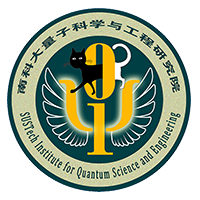New Research on the Resource Theory of Quantum Channels
Recent research by
a team at Southern University of Science and Technology (SUSTech) introduced a
new resource theory of quantum channels and applied it to study communication
over quantum channels.
Shenzhen Institute for Quantum Science and
Engineering (SIQSE) Chief Research Scientist and Institute of Electrical and Electronic Engineers
(IEEE) Fellow Masahito
Hayashi worked with his collaborators to introduce a new resource theory of
quantum channels relevant to communication scenarios. The research was
published in the high-impact academic journal Physical Review Letters (PRL) under
the title, “Application
of the Resource Theory of Channels to Communication Scenarios”.
Quantum resource
theories offer a highly versatile and powerful framework for studying different
phenomena in quantum physics. However, a common criticism is that the framework
often ends up with a formalistic level not solving existing problems. In particular,
it has been elusive whether the resource theory of quantum channels would be
helpful for answering concrete problems at all.
On the other hand,
entanglement-assisted information transmission via quantum channel has been a major field of
research in quantum information theory at all times. Its central goal is to
understand how much of the resources are required to accomplish the desired
information transmission by utilizing quantum entanglement.
Quantum
entanglement is known as a resource of magical power of quantum system. The
aim clarifies how entanglement enhances information transmission, while analyzing this improvement is notoriously
difficult due to their complex structures. This motivates the question of whether we
can adopt the quantum resource theory framework to investigate the improvement
of information transmission by using entanglement, consolidating it as
effective tools to solve concrete problems.
Masahito Hayashi
and his collaborators took the first step in this direction. They introduced the
resource theory of communication, a resource theory of channels relevant to
communication via quantum channels. With this formalism, they successfully
characterized fundamental properties of a quantum channel as a communication
mean: how much information the channel can reliably send (channel capacity)
under the efficient use of entanglement and how hard it is to effectively
implement the channel (channel simulation cost).
The introduced
framework allowed them to employ several novel ideas and techniques that have
recently been developed in the study of resource theories to address the
"classic" problems in quantum information theory. In particular, they
extended the results on the operational characterization of resource theories
and obtained an important property known as the strong converse property, which
shows the ultimate limitation of the amount of information transmission under
the efficient use of entanglement, as well as characterized its channel
simulation cost by formulating it as a resource transformation task in the
proposed resource theory.
They further
showed that their resource theory has an intimate connection to the
communication with help of ultimate correlation allowed by causal theories
respecting the theory of relativity, suggesting that their framework may serve
as an effective theoretical platform to investigate fundamental limitation of
communication over quantum channels.
This research shed
new perspective to fundamental problems in quantum Shannon theory while lifting
the resource theory of channels to effective tools in addressing concrete
problems. The technique formalized is extendable to more generic settings
thanks to the systematic nature of the resource theory framework.
Ryuji Takagi, a
Ph.D. student at Massachusetts Institute of Technology (MIT), was the first
author of the paper. Ryuji Takagi, Kun Wang (SIQSE), and Masahito Hayashi were the corresponding authors. SUSTech was the
second affiliation.
Paper link: https://journals.aps.org/prl/abstract/10.1103/PhysRevLett.124.120502



